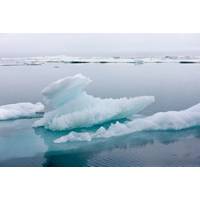
Arctic Ocean Could Be Ice-free In Summer By 2030s, Scientists Say
planet. As it is at the frontline of climate change, the eyes of many scientists and local indigenous people have been on the sea ice that covers much of the Arctic Ocean in winter. This thin film of frozen seawater expands and contracts with the seasons, reaching a minimum area in September each year.Arctic sea ice grows until March and then shrinks until September. NASAThe ice which remains at the end of summer is called multiyear sea ice and is considerably thicker than its seasonal counterpart. It acts as barrier to the transfer of both moisture and heat between the ocean and atmosphere. Over the past

Modeling Shows How Nuclear War Would Devastate the World’s Oceans
the low light and rapid cooling would cause large physical changes to the ocean, including a dramatic expansion of Artic sea ice. Critically, this ice would grow to block normally ice-free coastal regions essential for fishing, aquaculture, and shipping all across Europe.Three years after such a war, arctic sea ice expands by 50%, icing over the Baltic sea year-round and closing major ports such as Copenhagen and St. Petersburg. Even in the scenario of a more limited conflict between India and Pakistan, 27 to 47 billion tons of soot would be ejected into the upper atmosphere, and the resulting cooling
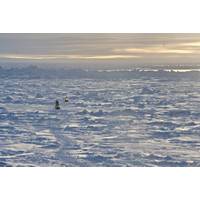
The Arctic: Scientists Aim to Improve Sea Ice Predictions' Accuracy, Access
sea ice tops the coastal waters of the Bering Sea near Toksook Bay on April 20, 2013. Rapid ice drift in the Bering Sea is a hazard for fishing vessels. Photo by Hajo Eicken, UAF International Arctic Research CenterWhat is SIPN?The Sea Ice Prediction Network formed shortly after the then-record Arctic sea ice minimum of 2007.“That really shocked some scientists and garnered a lot of public attention,” Bhatt said.Sea ice outlook forecasts began the following year and continued through 2013 on minimal funding. The National Science Foundation began providing financial support in 2014, allowing
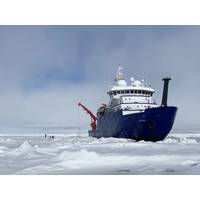
UAF’s GINA Provides a Guiding Hand in Arctic Ocean Research
The research vessel Sikuliaq navigated among and around the chunks and slabs of Arctic sea ice above Alaska for several weeks on two voyages this fall, breaking through frozen slabs when it had to, just as its sturdy hull is designed to do. It's now on a third trip.The Sikuliaq, a 261-ft. ice-capable research vessel operated by UAF, pauses in the Arctic Ocean in June 2021 during its fifth year of operation. A few months later, it traveled farther north than ever before — almost 500 miles beyond Point Barrow.Satellite imagery produced at the Geographic Information Network of Alaska, or GINA
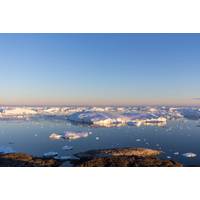
Arctic Warming Cascades Through Ocean and Over Land
sea ice extent in the satellite record, at 3.74 million square kilometers reached on Sept. 15. That was beaten only by the low in 2012, when a late-season cyclonic storm broke up much of that year's remaining ice.The minimum sea ice extent has never risen above its level in 2007 since then.(top) Arctic sea ice concentration on September 15, 2020—the day of the smallest extent of the year—compared to the median extent (gold line) reached on this date in Septembers from 1981 to 2010. (bottom) Annual maximum (dark blue) and minimum (light blue) ice extents from 1979 to 2020. Credit: NOAA

Hacking 4 Environment: Oceans - Creating Entrepreneurs from Scientists and Students
own, and whether the students’ suggested solution would fix the issue. UCSD’s Team Arctic Oracle, for example, spoke to 100 stakeholders on the way to devising a solution that uses SAR data and other sensors to measure ice thickness and other criteria to optimize shipping routes through the Arctic Sea.About the Author: Steve Weinstein is the senior vice president of strategy for the innovation firm BMNT and a board member of The Common Mission Project, BMNT’s non-profit arm dedicated to building an ecosystem of mission-driven entrepreneurs. He also teaches entrepreneurship at UC Berkeley
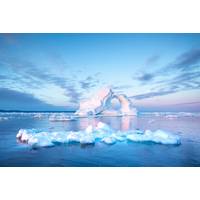
Arctic Sea Ice Lows Mark a New Polar Climate Regime
At the edge of the ice blanketing part of the Arctic Ocean, the ice looked sickly. Where thick sheets of ice once sat atop the water, now a layer of soft, spongey slush slid and bobbed atop the waves.From the deck of a research ship under a bright, clear sky, “ice pilot” Paul Ruzycki mused over how quickly the region was changing since he began helping ships spot and navigate between icebergs in 1996.“Not so long ago, I heard that we had 100 years before the Arctic would be ice free in the summer,” he said. “Then I heard 75 years, 25 years, and just recently I heard 15
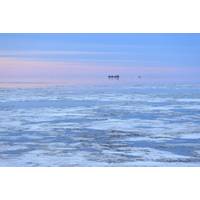
Winter Sea Ice in Bering Sea Reached Lowest Levels in Millennia
Stable Isotope Facility at the University of Alaska Fairbanks. The sediment layers in the peat cores serve as a "book going back in time."With the Arctic warming rapidly in recent decades, the extent of sea ice over the northern polar region has steadily waned. This year saw the summertime Arctic sea ice hit its lowest level for July in 40 years of record keeping.Sea ice builds up again each year during the winter. But the new study suggests that, in the Bering Sea, cold-season ice maximums may also be in decline.The loss of sea ice is already impacting Arctic wildlife, including walruses,

The Ocean's Microplastics Mess: Technology & Technique to Identify & Clean Up
awareness campaigns should guide and motivate communities; as well as scientific research and technological advance identify, quantify and mitigate. There’s so much we don’t know, but this, we do: the menace may be miniscule, the response must be massive.Scientists from AWI collect arctic sea ice to test for microplastic contamination. © Mar Fernande



 February 2024
February 2024





